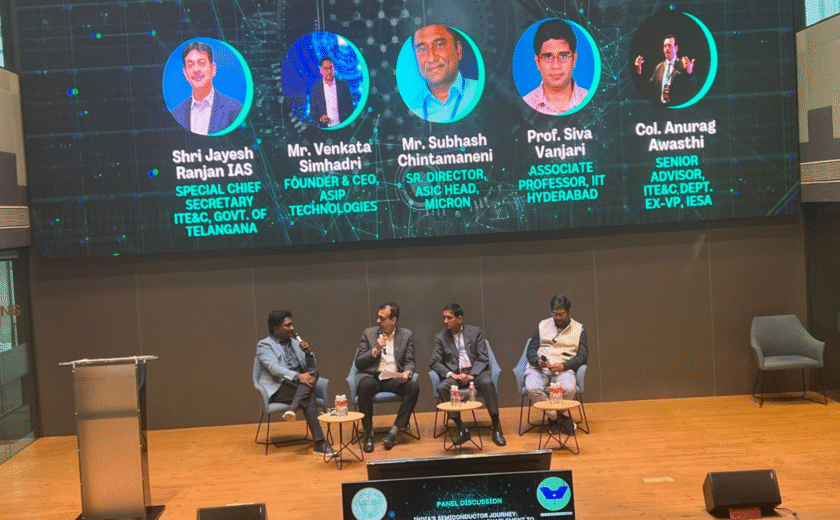As modern chips become more complex and power-hungry—driven by AI, IoT, and mobile computing—low power VLSI design has become a critical priority across the semiconductor industry. Power consumption impacts everything from battery life and heat dissipation to chip reliability and manufacturing costs.
While there are multiple power optimization strategies at various stages of the VLSI design flow, the RTL (Register Transfer Level) stage is where low power awareness must begin.
In this blog, we’ll explore how to optimize RTL code for low power in VLSI design, practical techniques used by leading chip designers, and how MOSart Labs prepares engineers to apply these methods in real-world projects.
Why Low Power Design at RTL Matters
Optimizing at the RTL level offers several advantages:
- Early power savings before synthesis
- Reduced cost due to fewer post-layout fixes
- Less complex ECO (Engineering Change Order) cycles
- Faster timing closure and better area utilization
According to industry reports, up to 40% of a chip’s power consumption can be controlled or optimized at the RTL stage.
Power Consumption Components in VLSI
Before diving into RTL optimization, it’s important to understand what consumes power in a digital chip:
1. Dynamic Power
Due to switching activity (charging/discharging of capacitive loads):
P = α × C × V² × f
Where:
α = Activity factor
C = Load capacitance
V = Supply voltage
f = Clock frequency
2. Static Power
Due to leakage currents in transistors, especially at deep sub-micron nodes (e.g., 7nm, 5nm).
RTL Techniques to Reduce Power Consumption
1. Clock Gating
- One of the most effective low power techniques. Prevents unnecessary clock toggling by disabling clock to idle blocks.
- Use enable signals to control clock gates
- Avoid redundant gating logic in the datapath
How to Implement:
Use coding styles that synthesize clean enable conditions
if (enable) begin
reg_out <= data_in;
end
Impact: Clock gating can reduce dynamic power by up to 30–40% in large digital blocks.
2. Operand Isolation
- Prevent switching in blocks whose output is not used.
- assign operand = (enable) ? input : ‘b0;
- This ensures that unnecessary transitions don’t propagate through combinational logic.
3. Resource Sharing
- Instead of duplicating logic blocks (e.g., multipliers, ALUs), reuse them using control logic and time multiplexing.
- Particularly useful in DSP and image processing RTL blocks.
4. Avoid Glitches
- Use one-hot encoding in FSMs or gray encoding in counters to reduce unnecessary toggling.
- Glitches are high-frequency spikes that increase dynamic power without affecting functionality.
5. Multi-bit Register Merging
Combine single-bit registers with the same control logic into multi-bit registers to reduce clock tree load.
6. Proper Coding for Synthesis
- Avoid coding practices that generate unnecessary latches or high fan-out paths:
- Always use full-case and parallel-case directives in FSMs
- Prevent unintended priority encoders
7. FSM Optimization
Choose encoding styles based on power goals:
- One-hot: Less combinational logic but more flip-flops
- Gray/Johnson code: Reduces bit changes per cycle
8. Memory Power Optimization
- Enable memory gating when memory is not being accessed
- Use smaller-width memory when high precision isn’t required
- Enable clocking of only used portions of memory
9. Reduce Switching Activity
- Avoid toggling signals that aren’t contributing to output
- Use pre-computed outputs or constants when inputs are static
10. Power-aware Simulation and Estimation
Use tools that allow power estimation at RTL to detect:
- High toggle rate signals
- Redundant computations
- Poor gating coverage
- Tools like Synopsys VCS-Power, PrimePower, and Cadence Joules are used for RTL power estimation.
Industry Tools for Low Power RTL Design
| Tool | Use Case |
|---|---|
| Synopsys Design Compiler | RTL synthesis with power optimization |
| Cadence Genus | Power-aware logic synthesis |
| PrimePower/Joules | RTL and gate-level power analysis |
| Power Compiler | Clock gating and power reduction |
Real-World Applications of Low Power RTL
Low power RTL design is crucial in:
- Smartphones and Tablets
- Wearable tech
- Automotive ADAS systems
- Battery-operated IoT devices
- Edge AI processors
Engineers working on these products are expected to code with power efficiency in mind.
Learn Low Power RTL Design at MOSart Labs
At MOSart Labs, we go beyond theory to teach practical, tool-driven low power VLSI design as part of our IIT Bhubaneswar-certified VLSI PG Diploma.
Key Highlights:
- Power-aware RTL coding sessions
- Work on Synopsys/Cadence-based RTL projects
- Clock gating, FSM optimization, operand isolation exercises
- Industry-aligned assignments and mock interviews
- 100% Placement Assistance for low power design roles
Final Thoughts
Low power design is no longer optional—it’s essential. Whether you’re building a mobile SoC or a smart sensor, optimizing RTL code for power efficiency can be the difference between success and failure in silicon.
Start by mastering:
- Clock gating
- Operand isolation
- FSM and resource optimization
- Power-aware simulations
With the right training and exposure—like what you get at MOSart Labs—you’ll be fully equipped to design smarter, cooler, and greener chips that meet today’s aggressive power budgets.



